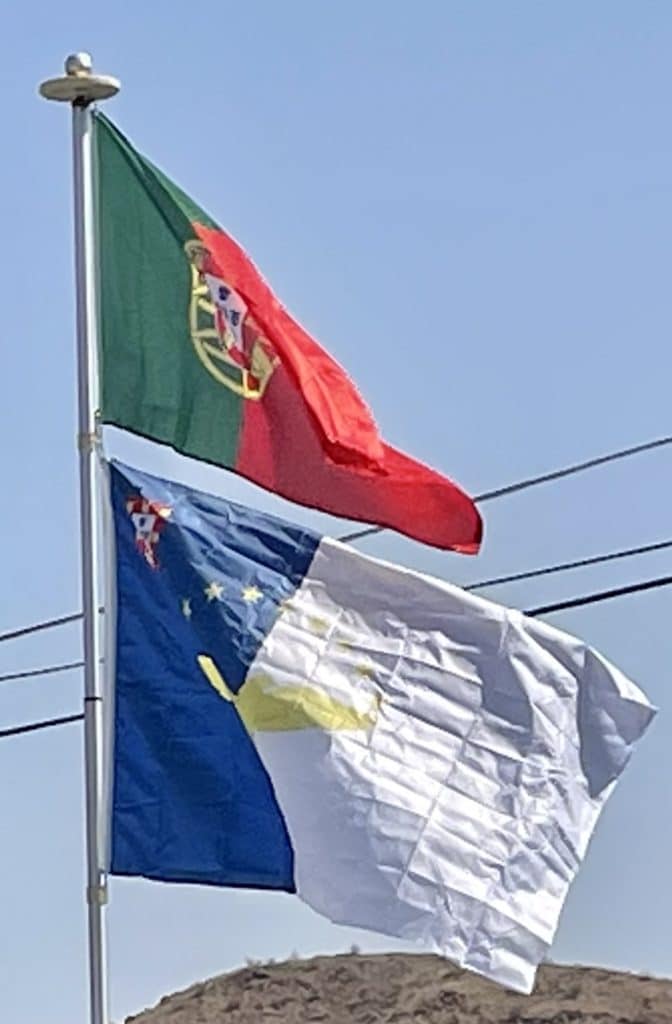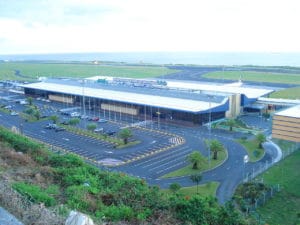
The airports are:
Santa Maria: Santa Maria Airport (LPAZ)
São Miguel: João Paulo II Airport (LPPD)
Terceira: Lajes Airport (LPLA)
São Jorge: São Jorge Airport (LPSJ)
Pico: Pico Airport (LPPI)
Faial: Horta Airport (LPHR)
Graciosa: Graciosa Airport (LPGR)
Flores: Flores Airport (LPFL)
Corvo: Corvo Airport (LPCR)
The Azores has had a long history of marine transport to overcome distances and establish inter-community contacts and trade. Passenger traffic to the main islands (São Miguel, Santa Maria, Terceira and Faial) began in the 17th century, and between the 18th–19th century, the Pico Yacht controlled the lucrative summer traffic season.
After 1871, the Insulana Shipping Company was the only entity responsible for regular traffic between the islands (except Corvo), Madeira and the United States. Finally, cargo and passenger transportation ceased in the 1970s, and the ships were sold or converted into tuna fishing boats. For the next 20 years, commercial maritime service between the islands ceased (except between Faial-Pico and Lajes das Flores-Vila do Corvo).
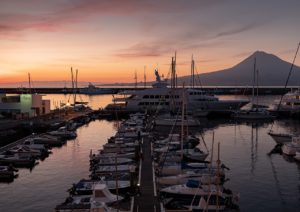
Transmaçor (Transportes Marítimos Açorianos, Lda.) was founded in 1987. The shipping company operates four to six daily connections between Horta and Madalena throughout the year, using its small fleet of ships, in addition to inter-island connections between Faial, Pico, São Jorge and Terceira during the summer months. New initiatives began in the late 1990s: the catamaran Iapetos began services, followed by Lady of Mann and Golfinho Azul.
Flag of the Azores:
The Flag of the Azores is the regional flag of the Portuguese Autonomous Region of the Azores. It is a rectangular bicolor with a field unevenly divided into blue on the hoist, and white on the fly.
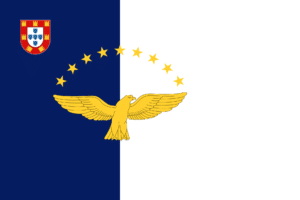
It was established on the 10th April 1979 by the Regional Assembly of the Azores, being based in the National Flag of Portugal used between 1830 and 1910.
The field is vertically divided into two colors: blue on the hoist side, and white on the fly. The color division is made in a way that blue spans 2⁄5 of the length and the remaining 3⁄5 are filled by white (ratio 2–3).
Positioned over the border between the blue and the white fields are nine five-sided golden stars in a semi-circular arch over a naturalistic designed golden goshawk. The top left canton of the flag contains the Portuguese Shield.
Historically, the Azores and its flag are deeply connected to the Flag of Portugal used between 1830 and 1910.
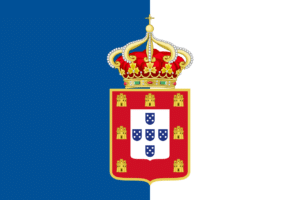
The 1976 Constitution of Portugal established the present Autonomous Region of the Azores. In 1979, the Regional Assembly of the Azores established the symbols of the region, including the Regional Flag. The Azorean Flag came as an adaption of the Portuguese flag used from 1830 until 1910, at the same time being also inspired by the autonomist flags of the late 19th century.
Blue and white were traditional colors used by the Portuguese nation and also represent the Portuguese Constitutional Monarchy borne in the Azores.
